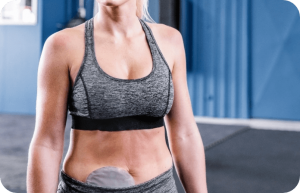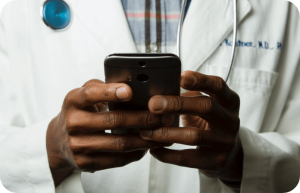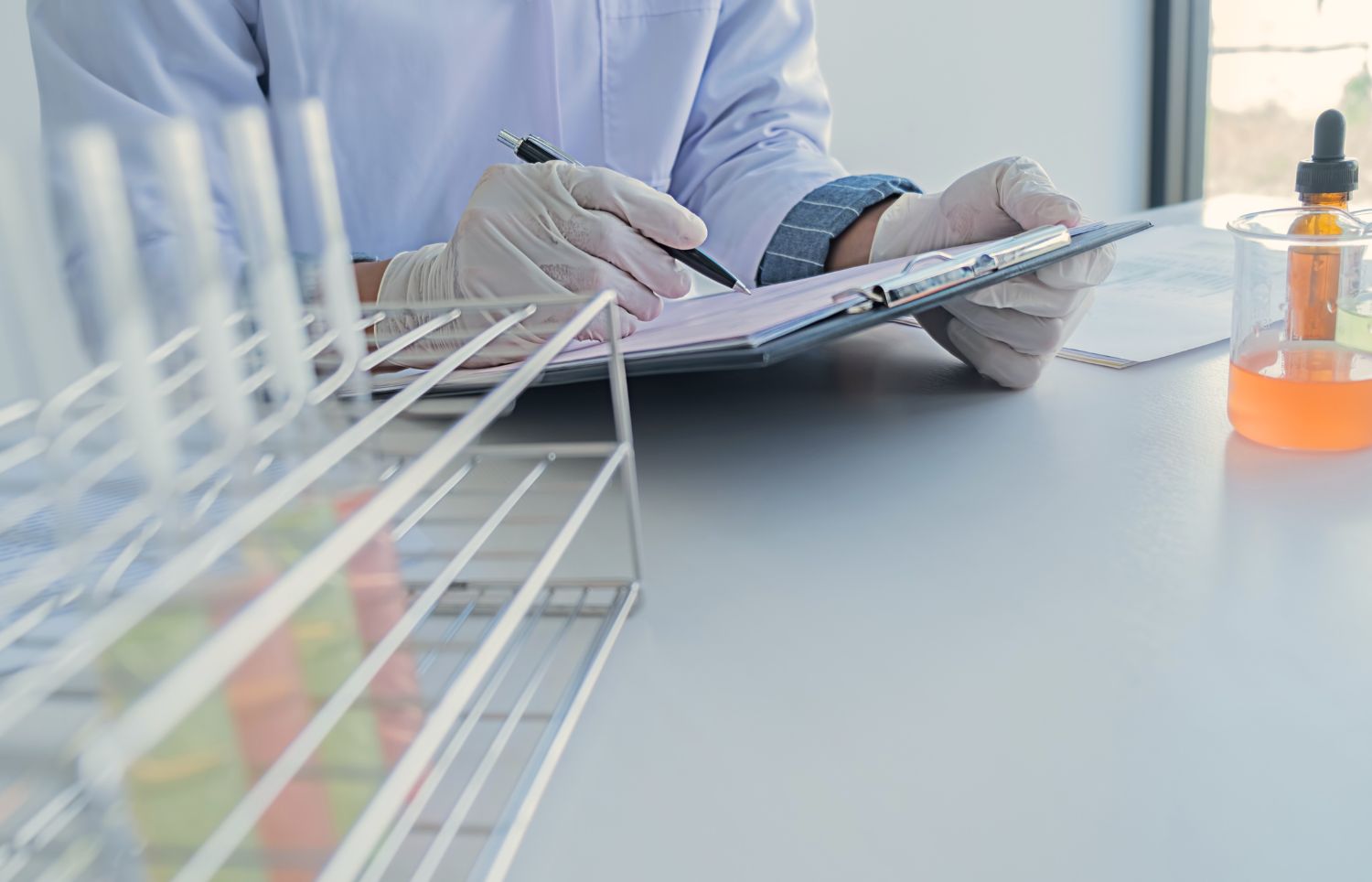Bladder & Bowel’s very own Community Marketing Manager, Gemma Savory, brings you a very personal battle…
The 8th October 2014 at precisely midday I found myself sat in a small lounge room at Birmingham Women’s Hospital with my husband, consultant and a ‘key worker’. I think I knew what was coming. A few minutes earlier, I had been sat in the waiting room trying to ignore the sympathetic glances from the nurses and the panicked receptionist trying to track down my consultant. Those words though, however they are delivered to you they still floor you “you have cancer”, that’s all I heard. The rest was white noise that I numbly nodded to.

So, at age 30 I found myself with Stage 3 Bowel Cancer. After the initial shock and a terrifying week of scans, I was relieved to know what was wrong with me after spending 8 months going back and forth to my GP with symptoms of bleeding, constipation and pain. After ruling out hormonal issues, I was finally referred to the hospital, who couldn’t find anything wrong with me. After begging for a second examination, my cancer was finally discovered.
The cancer was large. An 8-inch tumour located low down in my bowel and rectum and had burst through the bowel wall invading the back vaginal wall. My bowel was completely blocked and I was unable to eat and was losing weight rapidly. Treatment was going to be aggressive and extensive.
My first meeting with my colorectal surgeon was overwhelming and bewildering but I liked him. He told me straight what needed to happen. “First things first to make you more comfortable we need to perform a colostomy. This will more than likely become permanent.” I had heard of colostomy bags but had no idea how they looked or how they worked. I imagined a hole or a tube in the stomach. I was horrified to find out that it would entail having my bowel sewn to my abdomen. A Nurse Specialist took me and my family into a side room and went through a colostomy training pack, which contained a fake stoma and colostomy bags to try out. She showed me pictures of stomas straight out of surgery and fully healed to lessen the shock after my operation. I went home that day, tried on a bag and cried my eyes out. I couldn’t deal with having this hideous bag attached to my stomach for the rest of my life.
In early November I had surgery to de function my bowel and create an end colostomy. The surgery took around an hour and a half and I spent 5 days in hospital. I was placed on an enhanced recovery programme and started eating and drinking and caring for my stoma just a day after surgery. Even though I found this difficult, I knew this was the best thing for me. After a few weeks I had recovered from the surgery and was navigating my way with my new attachment. It was like having a newborn baby, every time I wanted to leave the house it seemed to erupt and make me late for everything. If I was with a group of people, it would embarrassingly announce itself to the whole room with its unique musical sounds. If I was by myself, it would be an oasis of calm. Public toilets became a nightmare. I had to choose between cramming myself in a cubicle and decide what was the cleanest surface to balance all my equipment on or face the disapproving looks and tutting if I used a larger disabled toilet. I would perform bag changes at breakneck speed as I felt so guilty for using the facilities. Finding a toilet for a stoma patient is near on impossible. I can’t tell you how many times I’ve had to lay my bag or coat on the floor to provide a vaguely clean surface to do my bag change on.
The world of colostomy bags was confusing and took a lot of research to find the right one for me. I left hospital with a small supply of really ugly and extremely large bags. Being only 4 foot 11, I didn’t want a bulky bag that sat just above my knees. I applied to lots of different suppliers for samples of different sized bags and tested them all out to see what I felt confident in. There are so many different types, it can be a bit overwhelming! Bags with flat wafers, convex wafers, manuka honey, aloe vera and with or without inspection windows. I finally settled on a midi bag which was just the perfect size for my output and physical size. Whilst having chemotherapy I suffered a lot from skin rashes under my bag which made the bags difficult to stick, which meant I suffered from lots of leaks. I found that applying a barrier spray helped ease the rash and using ‘banana strips’ (elastic tape that sits around your bag) helped me until I got through chemo. I’m lucky though in that I have a pretty well-behaved stoma the majority of the time.
In December I started a 5-week course of chemoradiation, which involved IV infusions of 5FU (Fluorouracil) chemotherapy alongside daily radiotherapy in order to shrink the tumour. I was mostly ok throughout the treatment apart from fatigue and radiation burns as the weeks progressed. The worst side effects were just after treatment when the sickness hit me and I suffered from severe radiation ‘burns’. I had blisters on top of blisters. I was in excruciating pain whenever I walked, sat or lay down.
In April 2015, I underwent surgery to remove the remaining cancer. I had an Abdominoperineal resection (or APR surgery). It involved removing the remaining bowel under my stoma, my rectum and the back vaginal wall. I then had a reconstruction at the same time and had my right-hand abdominal muscles and a flap of skin removed and used to create a new vaginal wall and patch the hole left by my surgery. My pelvis, abdomen and bladder were strengthened with biological mesh (made from pigs skin). The surgery took around 7 hours and I was in Critical Care for 9 days plus a further 4 days on the ward. The surgery was brutal and recovery emotionally and physically painful. My first week in Critical Care was a blur of wires and tubes (including a drain up the bum!) and I wasn’t allowed to move from the bed. A nurse would turn me every two hours to avoid any pressure on my skin.
Once home, recovery was slow. I was in agony for weeks, and unable to sit for around 3 months. I was physically very weak and was at my lowest weight, which was just under 5 stone. The hardest thing for me was the physical change in my body. I had a scar that ran from my ribs all the way down my abdomen and pelvis and the skin and muscle graft felt huge, made me feel disfigured and was uncomfortable. I described my body as a patchwork quilt. In reality, it has taken nearly two years for my body to properly heal from that surgery.
By summer 2015, I had recovered enough to start chemotherapy again and I had 9 months of weekly 5FU chemotherapy treatments. My CT scan the following April confirmed that there was no evidence of cancer and I was finally in remission.
After a tough 18 months, I spent the time building myself back up and moving forward with my life as much as possible. I went back to work and started training in the gym to improve my stamina and range of movement. Life post-treatment can be difficult. There is always the anxiety over whether your cancer will return, getting used to your new body and dealing with new side effects along the way. As a consequence of treatment, I’ve gone through the menopause and I have osteoporosis in my spine and hips but I was determined to carry on as ‘normal’ as possible.
In April last year, I had my routine CT scan. After 4 weeks and no news I figured I was in the clear and stopped worrying about the results. At the end of May I had a phone call from my surgeon’s secretary asking if I could come into the next clinic. After an agonising wait over the weekend stressing over all the possibilities, my consultant had to break to me the worst possible news. My cancer had returned and had spread to my lungs and I was now Stage 4 and incurable. The news completely broke me – more so than my first one. I didn’t get it. I felt fine. But there they were, four tumours dotted around my left lung. Even my consultant looked shocked. Since June I have been back on chemotherapy to control the cancer. This time I have needed a stronger treatment called FOLFOX (5FU and Oxaliplatin) and in order to do this, I have also had to start haemodialysis as my kidney function was just too low to cope with the treatment. My cancer has remained stable and I’m hoping to be able to have surgery in the next few months to get me back to ‘No Evidence of Disease’.
Life is pretty chaotic at the moment and treatment feels like a full-time job but I’m excited about the possibility of being cancer free again. Cancer is on the rise in the under 50’s and around 2,500 younger people in the UK are diagnosed with bowel cancer each year. If you have any symptoms such as a change in bowel habit for 3 weeks or more, bleeding from the bottom or after a bowel movement, unexplained tiredness and weight loss please see your GP straight away and please don’t feel embarrassed by any of your symptoms – it may just save your life.
Author – Gemma Savory, Bladder & Bowel Community









